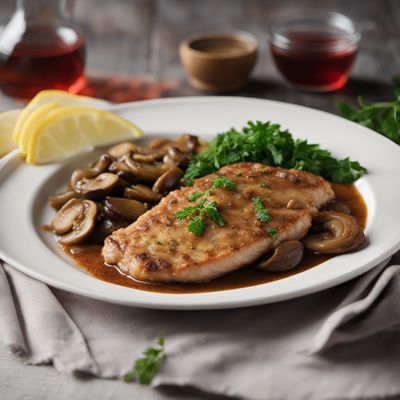
Ingredient
Marsala
"The Rich and Robust Elixir: Unveiling the Secrets of Marsala"
Marsala is a rich and aromatic wine with a deep amber color. It has a complex flavor profile, ranging from sweet to dry, and a distinct nutty aroma. The taste of Marsala can vary depending on the aging process, with younger Marsalas being lighter and fruitier, while older ones develop a more intense and caramelized flavor. Its velvety texture and full-bodied nature make it a versatile ingredient in both cooking and baking.
Origins and history
Marsala wine has a long and storied history that dates back to the late 18th century in Sicily, Italy. It was first produced by English merchant John Woodhouse, who was inspired by the fortified wines of Spain. Marsala gained popularity both locally and internationally, becoming a staple in Italian cuisine and a sought-after ingredient in various European dishes.
Nutritional information
Marsala wine is relatively high in calories, with around 150 calories per 3.5-ounce serving. It contains small amounts of vitamins and minerals, but its main nutritional aspect lies in its moderate alcohol content.
Allergens
Marsala wine may contain sulfites, which can trigger allergic reactions in some individuals.
How to select
When selecting Marsala wine, opt for a reputable brand that offers different varieties, such as sweet, dry, or semi-dry. Look for bottles labeled "Marsala Superiore" or "Marsala Vergine" for higher quality options. Check the label for the aging process, as older Marsalas tend to have a more complex flavor.
Storage recommendations
To maintain the freshness and quality of Marsala, store it in a cool, dark place away from direct sunlight. Once opened, reseal the bottle tightly and refrigerate it to extend its shelf life.
How to produce
Producing Marsala wine requires specialized knowledge and equipment, making it challenging for amateurs to produce at home. It involves fermenting and fortifying grape juice with brandy or neutral spirits, followed by aging in oak barrels.
Preparation tips
Marsala is a versatile ingredient that can be used in both savory and sweet dishes. It is commonly used in Italian recipes such as Chicken Marsala, where it adds depth and richness to the sauce. In desserts, Marsala can be incorporated into tiramisu or zabaglione, enhancing the flavors with its unique characteristics. When cooking with Marsala, it is important to add it early in the cooking process to allow the alcohol to evaporate and the flavors to meld.
Substitutions
If Marsala wine is not available, a suitable substitute can be made by combining equal parts of grape juice and brandy or cognac. This mixture can mimic the flavor and richness of Marsala in recipes.
Culinary uses
Marsala is widely used in Italian cuisine, particularly in savory dishes such as sauces, stews, and risottos. It adds depth and complexity to meat dishes, especially when paired with mushrooms or caramelized onions. In desserts, Marsala is a key ingredient in classic Italian recipes like tiramisu and zabaglione, providing a unique flavor profile.
Availability
Marsala wine is commonly available in Italy, particularly in the region of Sicily where it is produced. It is also exported and can be found in specialty wine shops and well-stocked supermarkets worldwide.
More ingredients from this category
Recipes using Marsala

Sacripantina - A Delicate Italian Layered Cake
Heavenly Layers of Delight: The Exquisite Sacripantina Cake

Slovenian-style Marsala Scaloppine
Savory Marsala Delight: Slovenian-style Scaloppine

Homemade Sicilian Cassata
Sicilian Delight: Homemade Cassata with a Twist

Zabaione Gelato
Velvety Italian Zabaione Gelato: A Heavenly Frozen Delight

North African Spiced Carrots with Marsala
Moroccan-Inspired Marsala Carrots: A Flavorful Twist on a Classic Dish

Scaloppine al Marsala with Creamy Mushroom Sauce
Marsala Magic: Tender Veal Scaloppine in Creamy Mushroom Delight

Carrots in Marsala Sauce
Marsala Glazed Carrots: A Sweet and Savory Delight

Zabaione with a Twist
Velvety Delight: A Modern Twist on Zabaione

